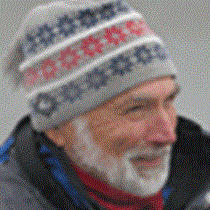Ideal Cove & Petersburg
This morning we explored a most authentic Southeast Alaskan rainforest at Ideal Cove. Rainwater passed down through the canopy of spruces and hemlocks to fool’s huckleberry and blueberry leaves below. The water then channeled down their stems and off the leaf edges to drip upon twisted stalk and lady and oak ferns. They all rose from a carpet of moss that seemed to cover almost everything. When the mosses could no longer hold rain, it ran in rivulets to coalesce finally to take this precious water to a dark brown stream that led to the sea. As we looked about the forest it seemed clear that this was a primeval place born of the Mesozoic where mosses and conifers also dominated. We walked along a boardwalk covered with fish netting to improve one’s footing and made our way to one of three beautiful lakes. Water spilled over a beaver dam with Hill Lake stretching out beyond. Leaves of yellow pond lilies covered parts of its surface. To experience a temperate rainforest is essential to a Southeast Alaskan visit. The morning views were sometimes brooding but beautiful, exquisite in their verdant complexity and so detailed that it defies seeing all of its intricacy.
Petersburg is about fish, finding them, harvesting them, processing them and creating a way of life from them. The standard of living in Petersburg is high, and miles of homes have ocean views that look upon Fredrick Sound or Wrangell Narrows. There are great places to hike here as well. Some of us walked up to a beautiful muskeg complete with acres of sphagnum moss, sedges, cottongrass and small dark pools surrounded by carnivorous sundews.
Many guests explored town, while others looked closely at the fishing fleet. Dock walks are a good way to feel the pulse of a community. The state of Alaska monitors how many fish are caught and how many are retuning to the local streams. They control the catch by how long they open each area for fishing. Sometimes few vessels are around the docks. At other times, between the short openings, the docks are loaded with boats. This close scrutiny by the Fish and Game produces fisheries that are very healthy and productive over the long run. As today’s photograph shows, this was a time between openings with boats lined up in their slips. Million-dollar seiners are enjoyable to look at, because they are usually in ship-shape condition, clean and full of high-tech complex gear. The purse seiner in the photograph shows the seine skiff loaded on top of the net. The captain with a skilled crew of about 4 men can set a net, bring it aboard with about 2,000 pink salmon and reset it in 45 minutes to an hour.
Late in the afternoon Dr. Fred Sharpe from the Alaska Whale Foundation gave a fascinating program about humpback whales and what he and his colleagues have learned. We feasted on fresh Dungeness crab as we headed north into Fredrick Sound.
Call +1.800.397.3348 or contact your travel advisor




